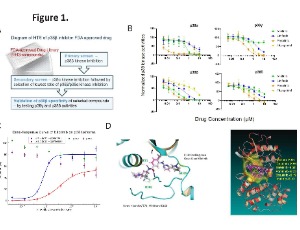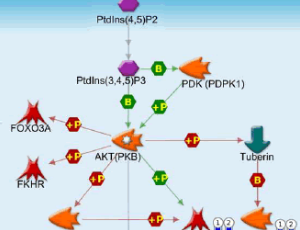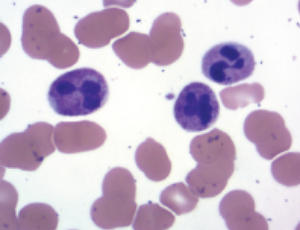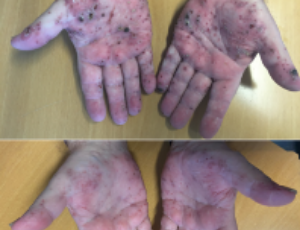Loading
Journal of Clinical Haematology
ISSN: 2766-4686
Featured Articles
Lower 24-Month Relative Survival among Black Patients with Non- Hodgkin’s Lymphoma: An Analysis of the SEER Data 1997-2015
Maria Jacqueline Nieto, Zhen Li, Hasan Rehman, Muhammad Wasif Saif
Recent progress in the therapies used for patients with Non- Hodgkin’s lymphoma (NHL) has improved survival. In 2020, 77,240 people were diagnosed with NHL. Although it accounts for 4% of all cancers, the incidence has been reported to be decreasing in the last few years. About 26% of people will expire from NHL (15% males and 11% females).Non-Hodgkin lymphoma arises from the clonal expansion of B, T, and natural killer (NK) cells. There is a significant degree of heterogeneity in NHL and this is likely related to different degrees of differentiation and maturation of these cells. These hematological malignancies exhibit different tumor behavior and are responsive to different chemotherapy agents which impacts clinical outcomes. There are patients who can be cured with current regimens; however, subtypes such as indolent and some aggressive lymphomas remain incurable necessitating treatment with new therapies including immunotherapy, targeted therapy, CAR T cells, and hematopoietic stem cell transplant.
J Clin Haematol, 2021, Volume 2, Issue 1, p5-13 | DOI: 10.33696/haematology.2.022
Repurposing Nilotinib as a Selective P38β Inhibitor in Hematopoietic Malignancies: Clinical Evidence and Mechanistic Insights
Xu Hannah Zhang, Jack Hsiang, Sangkil Nam, Hongzhi Li, Yate-Ching Yuan, Xiwei Wu, Susan Hmwe, Roger Moore, Steven T. Rosen
Background: Cutaneous T cell lymphoma (CTCL) is an incurable cancer characterized by elevated p38β and p38γ and downregulated tumor-suppressive p38α. Objectives: We aimed to identify selective p38β inhibitors and investigate their mechanisms and therapeutic implications in hematologic malignancies. Methods: A high-throughput screen of Food and Drug Administration (FDA)-approved compounds was conducted to identify p38β inhibitors. In vitro kinase assays, Western blots, scRNA-seq, synergy tests, and mass spectrometry were used. Clinical trial and public datasets were analyzed.
J Clin Haematol, 2025, Volume 6, Issue 1, p38-55 | DOI: 10.33696/haematology.6.067
Flavopiridol (Alvocidib), a Cyclin-dependent Kinases (CDKs) Inhibitor, Found Synergy Effects with Niclosamide in Cutaneous T-cell Lymphoma
Xu Hannah Zhang, Jack Hsiang, Steven T. Rosen
Flavopiridol (FVP; alvocidib), an FDA-approved orphan drug, has been studied in clinical trials under both single treatment and combination scenarios; several singleagent Phase I and Phase II clinical trials against leukemia, lymphomas, and solid tumors are active. To date, there have been more than 50 clinical trials involving FVP in the United States. Unfortunately, almost half of patients on FVP clinical trials showed serious adverse effects, implicating appropriate dosages need to be found and an alternative way to circumvent the toxicity of FVP with synergistic agents.
J Clin Haematol, 2021, Volume 2, Issue 2, p48-61 | DOI: 10.33696/haematology.2.028
Multiple Myeloma with Neutrophilia: Two Etiologic Pathways for a Rare Presentation of a Common Diagnosis
Rachel Rose Hall, Christine MG Schammel, Jennifer Bell Knight
Multiple myeloma (MM) is a common hematologic malignancy, with 32,110 new cases diagnosed in the United States in 2019, resulting in 12,960 deaths. While neutrophilia
is also a common entity, it most often arises secondary to other etiologies, such as infection or inflammatory processes.

Concomitant Langerhans Cell Histiocytosis and Chronic Myelomonocytic Leukaemia Responding to 5-azacitidine
Peter Brændstrup, Dennis Lund Hansen, Louise Kristensen, Henrik Frederiksen, Hanne E. H. Møller
Langerhans cell histiocytosis (LCH) is a rare, clonal, haematological disease of myeloid origin involving infiltration of neoplastic cells resembling Langerhans cells in various tissues. LCH cells express normal Langerhans cell markers such as CD1a, Langerin (CD207), and S100.
J Clin Haematol, 2022, Volume 3, Issue 2, p61-65 | DOI: 10.33696/haematology.3.050
When Should Transplant Physicians Think about Familial Blood Cancers?
Lucy A. Godley
A 56-year-old Caucasian man was referred to an academic medical center for consideration of allogeneic hematopoietic stem cell transplantation (HSCT). One year earlier, he had seen his primary care physician for increased fatigue and decreased exercise tolerance, and a complete blood cell count showed a total white blood cell count of 2500/μL, hemoglobin of 7.2g/dL, and a platelet count of 110,000/μL. The white blood cell differential showed an absolute neutrophil count of 900/μL. The patient was referred to a hematologist who performed a bone marrow biopsy that showed a myelodysplastic syndrome with del(5q).
J Clin Haematol, 2020, Volume 1, Issue 3, p78-84 | DOI: 10.33696/haematology.1.012
Gemcitabine in the Era of Cancer Immunotherapy
Katarzyna Piadel, Angus George Dalgleish, Peter Lawrence Smith
Gemcitabine is a synthetic pyrimidine nucleoside analogue which is administered intravenously as a chemotherapeutic to treat numerous cancers. Gemcitabine requires transport into cells and activation by phosphorylation, the resulting gemcitabine triphosphate is incorporated into newly synthesized DNA during cell division, inhibiting further DNA synthesis and causing cell death. Gemcitabine is used to treat cancers including those of the pancreas, lung, breast, colon, and ovary either as first or second line treatments as a single agent or in combination.
J Clin Haematol, 2020, Volume 1, Issue 4, p107-120 | DOI: 10.33696/haematology.1.016
About Scientific Archives
Scientific Archives is a global publisher initiated with the mission of ensuring equal opportunity for accessing science to research community all over the world. Spreading research findings with great relevance to all channels without any barrier is our goal. We want to overcome the challenges of Open Access with ensured quality and transparency.
